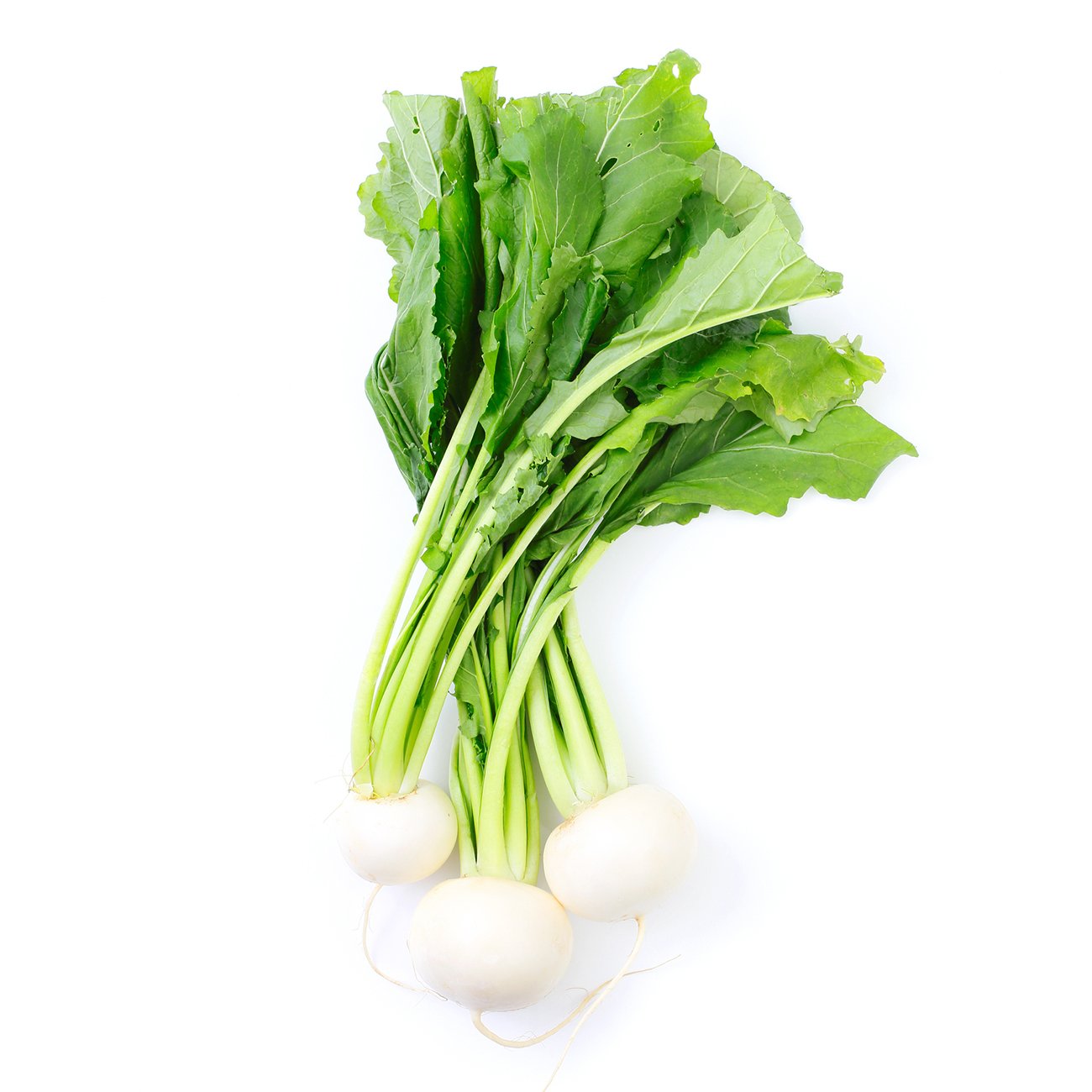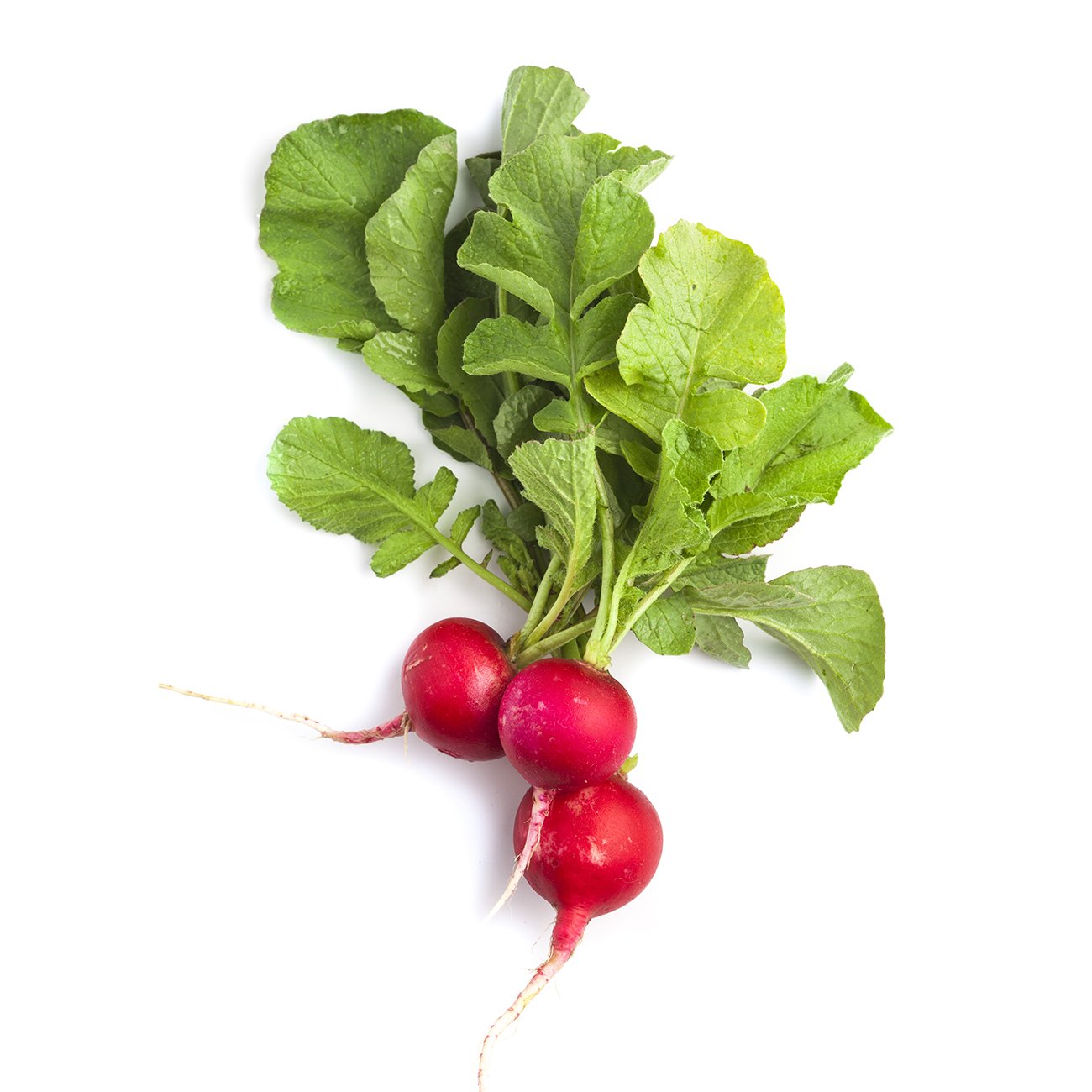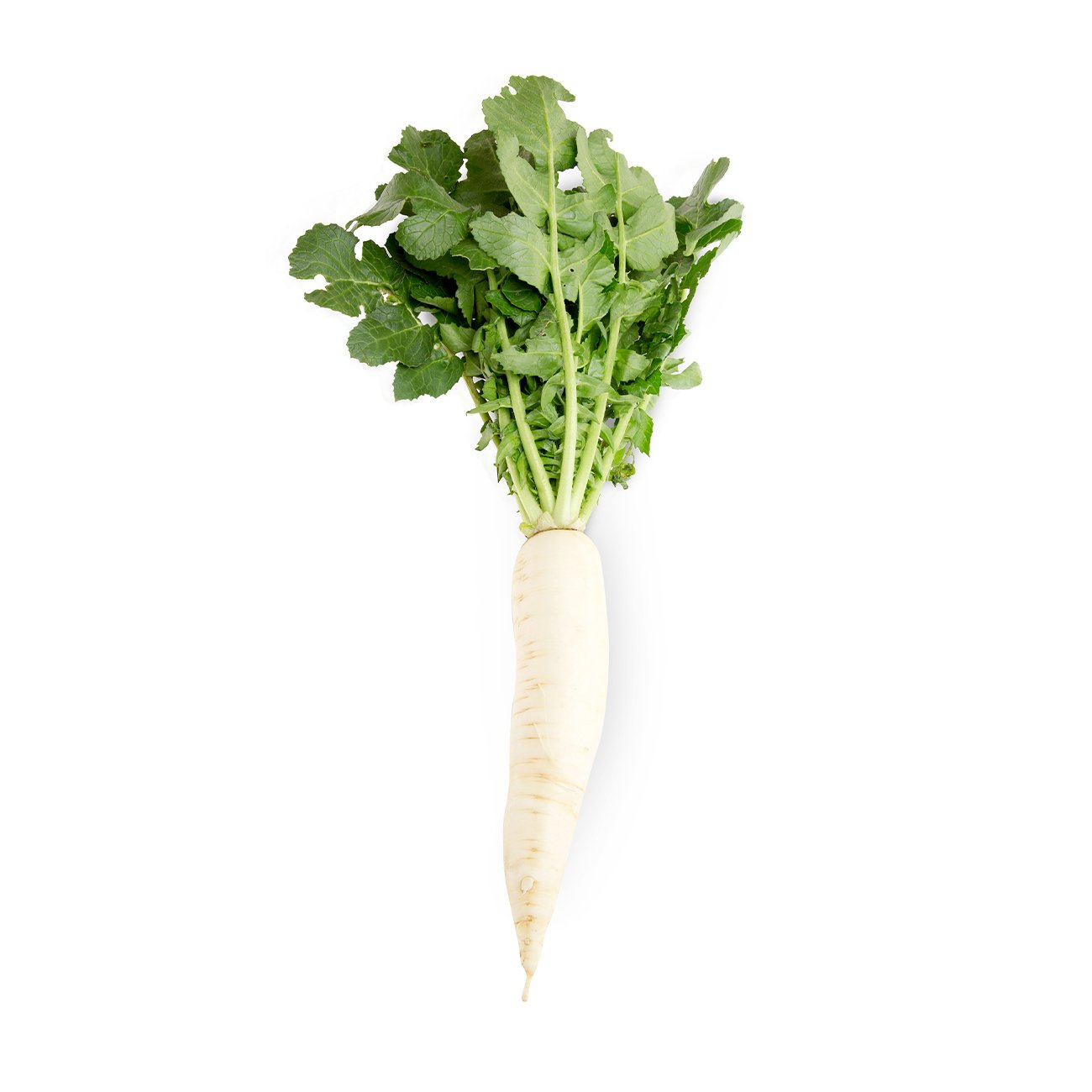Radish, white
Milder than its red relative, but equally as crunchy.
Alternative Name
N/A
Scientific Name
Raphanus sativus
Health benefits
Characterised by white skin and flesh with a crunchy texture, white radishes can be round or long and cylindrical in shape, like the daikon radish. They are sweet and juicy but also have a hot, peppery flavour. They are generally milder than red radishes. Grate, shred or julienne for salads, slice and bake into chips, or add to pot roasts or casseroles.
-
Harvesting
Roots of bunched or topped radish should be of uniform and similar shape for the variety, well formed, smooth and firm but of tender texture. They should be free of growth or harvest damage, and free of decay, disease or insects. Bunched radish tops should be fresh in appearance, turgid, and free of freeze injury or other serious injury, seed stalk, yellowing or other discolouration, disease, decay, or insects.Postharvest storage temperature
Optimum storage is 0°C. Rapid cooling is essential to achieve the full storage potential of both bunched and topped roots. Radish is suitable for icing to maintain temperature and contribute moisture for retaining a crisp texture. Under these conditions common red radish may be expected to maintain acceptable quality for 7–14 days with tops and 21–28 days if topped. Freezing injury will occur at -1°C and result in shoots becoming water-soaked, wilted and turn black with glassy roots. Roots become soft quickly on warming and pigmented roots may 'bleed' (lose pigment).Controlled atmosphere storage
Atmospheres of 1–2% O2 and 2-3% CO2 are slightly beneficial in maintaining quality of topped radish when storage temperatures are 5–7°C. Controlled atmosphere helps retard the re-growth of shoots and rootlets in 'topped and tailed' roots. However, exposure to controlled atmospheres above 7°C will result in the development of off-flavours, browning and soft rot.Ethylene sensitivity
Radish is not sensitive to ethylene. Bunched tops may exhibit yellowing with prolonged storage and ethylene exposure.Humidity storage
Radishes should be stored at 95–100% relative humidity to reduce water loss.Disease & infection
Bacterial black spot is a problem in some production locations and will develop in postharvest storage at warmer than optimum temperatures. Refrigeration is the primary control but washing roots in chlorinated water is reported to significantly control this disease. Prompt cooling, chlorination, and refrigeration are also effective in controlling bacterial soft rot. Rhizotonia spp. lesions may develop in storage at warmer than optimal temperatures but can be effectively controlled in the field. Grey mould and watery soft rot can develop, especially around harvest wounds, even at temperatures below 5°C. -
Scrub and trim before use. Separate stalks from roots and keep both parts separately in containers in fridge.

You might also like
Veggy tip
Avoid peeling radishes as many nutrients are more concentrated in the skin. If you have to peel, then gently pare away a superficial thin layer only.



